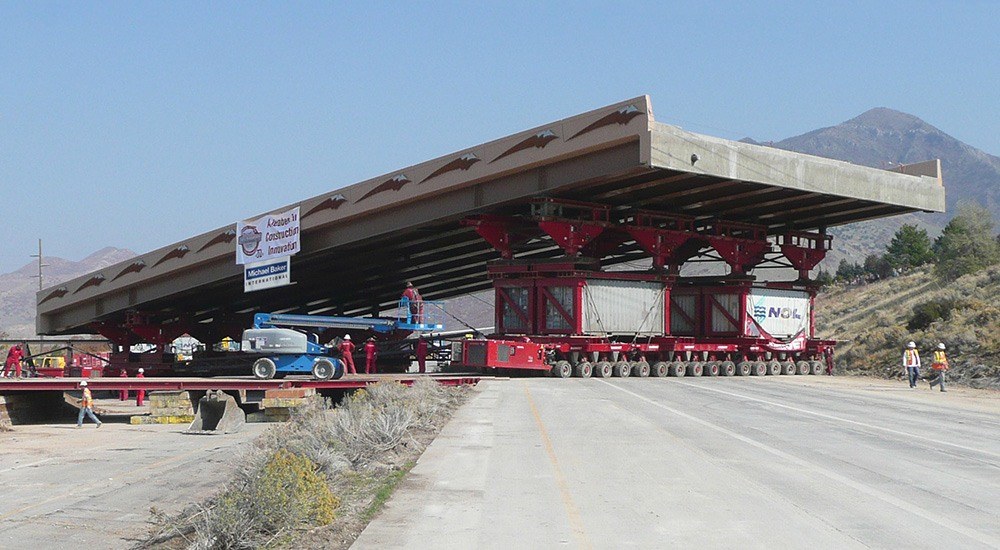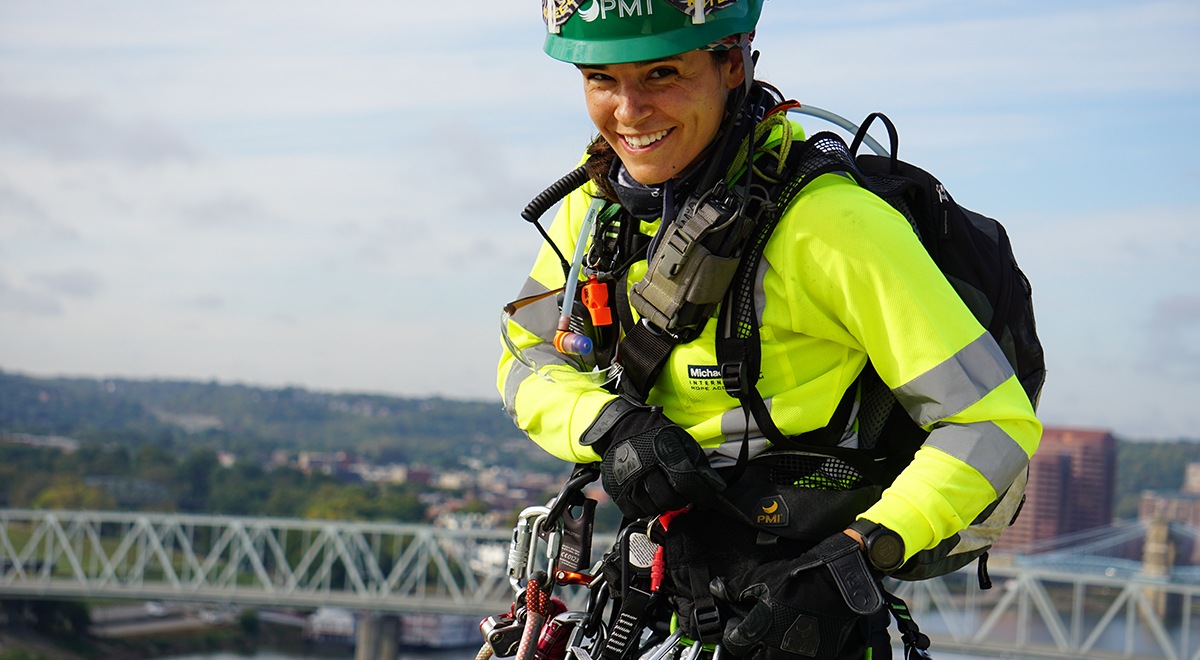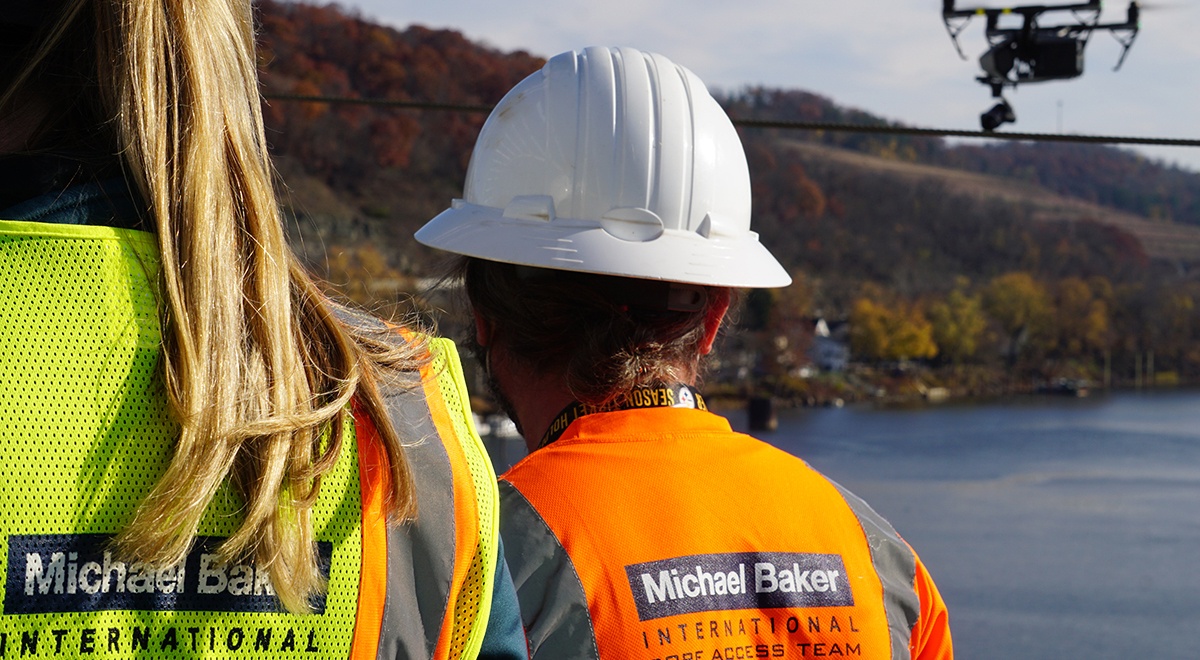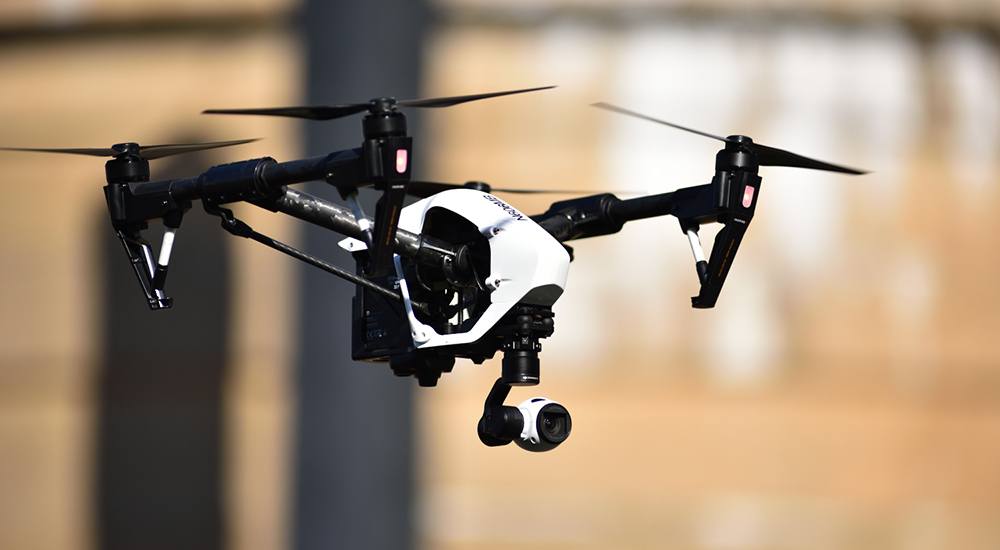Written by:
Scott Roux, P.E., S.E. │ Michael Baker National Bridge Practice Lead
Mike Arens, P.E., S.E. │ Michael Baker Office Executive, Salt Lake City
From the Winter 2018/2019 issue of Signature
America runs on bridges — more than 600,000 of them. These spans aid the country’s commerce while facilitating the personal mobility so prized by our society. Yet the American Society of Civil Engineers (ASCE) reports that in 2016, more than 9 percent of those bridges were structurally deficient, with Americans making 188 million trips across such inadequate spans each day.
That alarming statistic underscores the priority of bridge repair and replacement, upgrades that often come with their own perils, including many months of road closings and detours during construction or rehabilitation as well as hazards for construction crews and the traveling public in work zones. The latter is significant, as the Federal Highway Administration (FHWA) tells us that in 2015 alone, 96,626 crashes occurred in work zones, up 7.8 percent from the previous year. On average, 12 work zone crashes resulting in at least one fatality occurred every week in 2015.
Wouldn’t it be wonderful if there were a way to speed up bridge construction and repair/replacement to minimize delays and detours for motorists and reduce the incidence of work zone injuries? Good news: there is. It’s called Accelerated Bridge Construction (ABC).
ABC is an ever-more-popular approach that allows for faster bridge construction, which reduces the need for bridge and road closings and helps limit work zone injuries. Among the tools and technologies in the ABC suite are:
- Use of prefabricated components. These include bridge deck panels, abutment caps and substructure columns and foundations. Traditionally, these components are built in-place, a time-consuming process that extends bridge and road impacts and closures. With ABC, many of these components are fabricated off-site – in precast shops, for example – then shipped to the construction site, installation-ready. This not only shaves time from construction, but it also allows for better fabrication, as the process can be more precise in the controlled environment of a shop not subject to the ravages of weather.
- Off-site superstructure construction. If a new superstructure is built directly on the site of the existing bridge, motorists cannot use that bridge until the superstructure is completed. Using ABC, the superstructure is constructed off-line on temporary supports while existing bridge substructure may be widened, reinforced or repaired, or a new substructure built under the existing superstructure. Once the new superstructure and substructures are completed, the existing bridge is demolished or repurposed and the new superstructure set in place.
- Innovative technologies to move superstructures. In this fascinating aspect of ABC, new superstructures can be slid, launched or propelled onto existing superstructures, a technological marvel that, in some cases, can be accomplished literally overnight.
Other elements of ABC may include fast-tracking of environmental clearances and other permitting and early informational meetings with stakeholders and the community.
Michael Baker International has developed a considerable body of experience in ABC, a leadership position that has allowed the company to advance its state-of-the-art expertise throughout the engineering and construction industries. While we typically head up the design phase of ABC builds, we also work closely with contractors and have been engaged to provide ABC project oversight by departments of transportation in Alabama, Iowa, Kentucky, New York, Oklahoma, Utah and Wisconsin. We were the primary author of FHWA’s slide-in bridge construction (SIBC) guide, and we wrote the ABC section for the Wisconsin Department of Transportation Bridge Manual.
Michael Baker’s key ABC projects have increased safety and reduced inconvenience for the traveling public.
I-215/4500 SOUTH BRIDGE, SALT LAKE CITY
Prior to this $7 million, 2007 project for the Utah Department of Transportation (UDOT), ABC had been focused primarily on prefabricated components. For this challenge of a bridge replacement over a busy interstate highway, a span that carries an estimated 15,000 vehicles daily, Michael Baker rolled out a full-fledged ABC design.
For the 172-foot bridge, we designed replacement abutments built on cast-in-place footing foundations as well as full-height, cast-in-place wing walls. While the abutments were under construction beneath the existing bridge, traffic flow on the existing bridge and I-215 was fully maintained.
The replacement superstructure was built less than 200 yards away on temporary supports. The new superstructure was moved into place with a machine, adapted for ABC purposes, called a self-propelled modular transporter (SPMT), a platform vehicle with a large array of wheels and a grid of hydraulically connected axles.
The removal/replacement process limited lane closure impacts to I-215 to only 53 hours while all-lane access for traffic across the bridge itself resumed after only 10 days. Had the bridge been replaced conventionally, the traveling public would have faced a projected eight months of trafficc restrictions on the bridge as well as neck-down delays on I-215. The Accelerated Bridge Construction University Transportation Center at Florida International University estimates that bridge users saved $4 million thanks to ABC.
MILTON-MADISON BRIDGE, KENTUCKY-INDIANA
Opened in 1929, this 3,184-foot multi-span steel truss bridge carries approximately 10,000 vehicles each day on US 421 across the Ohio River between Milton, Ky., and Madison, Ind. The Indiana Department of Transportation (INDOT) and the Kentucky Transportation Cabinet (KYTC) decided to replace the aging superstructure but were concerned that the bridge would be out of service for up to a year, with ferry service the only feasible alternative transport mode.
The project team's ABC design concept required that new piers be built on temporary bents adjacent to the existing span. While US 421 traffic continued to flow, the existing piers were widened and rehabilitated. Traffic was diverted to the temporary bents while the old truss superstructure was demolished and the new steel-truss superstructure built alongside.
Then, using another ABC technique known as lateral slide, the new superstructure was moved into place atop the renovated piers. While the price tag for the project was an estimated $103.7 million, the two states needed the ferry service for only 15 days, which represents an enormous savings in time and convenience over the original projection.
At the time, Milton-Madison was the longest bridge slide in North America, and it earned considerable recognition, including the 2014 Best Project-Lateral Slide Category Award from the National Accelerated Bridge Construction Conference and the 2015 Grand Project Award from the American Council of Engineering Companies of Indiana.
I-15/LAYTON PARKWAY BRIDGE, LAYTON, UT
This 2010 UDOT initiative involved building a new bridge over I-15; there was no existing span. UDOT envisioned a 217-foot, steel-girder bridge, and a construction process that would minimize traffic disruptions along I-15.
Michael Baker designed yet another ABC technique — a bridge launch, which is something like a longitudinal slide rather than a lateral slide – to address this challenge and place the bridge over the interstate.
After half of the bridge was launched over southbound I-15 and the other half over the northbound freeway, the halves were connected, and concrete was placed in a closure pour to join them together. UDOT had estimated that conventional methodology would result in eight months of I-15 traffic disruptions. ABC reduced that period, almost unbelievably, to two nights.
ADVANCING ABC
SPMTs. Lateral slides. Bridge launchings. It all sounds like jargon from a futuristic society years beyond ours. Indeed, for a time, many in the construction and engineering industries regarded ABC as futuristic and not a valuable approach here and now.
But as Michael Baker and others advanced the technology, that attitude has changed so significantly that ABC-driven developments today are common, if not downright widespread. To date, our Company has completed a total of 10 SPMT bridge moves – a rare accomplishment. We provided all design services for three of these moves and construction engineering and DOT oversight for the additional seven. With more than 15 lateral bridge slides completed, Michael Baker is one of the leaders in providing this innovative service.
FHWA gave reluctant adopters a nudge by staging "showcase" projects, such as the 1-215/4500 South Bridge initiative. There, observers from more than 30 DOTs attended a presentation by Michael Baker, and other consultants and contractors were on hand to observe the SPMT bridge placement.
Just as importantly, the creation of FIU’s ABC Center has provided a respected institute for the study, dissemination and improvement of techniques, helping to ensure that development of the discipline proceeds in a well-researched, well-documented manner.
Thus, it has become quite apparent that if you are looking for ways to reduce timetables and improve safety in bridge construction, the answer is as easy as ABC.




